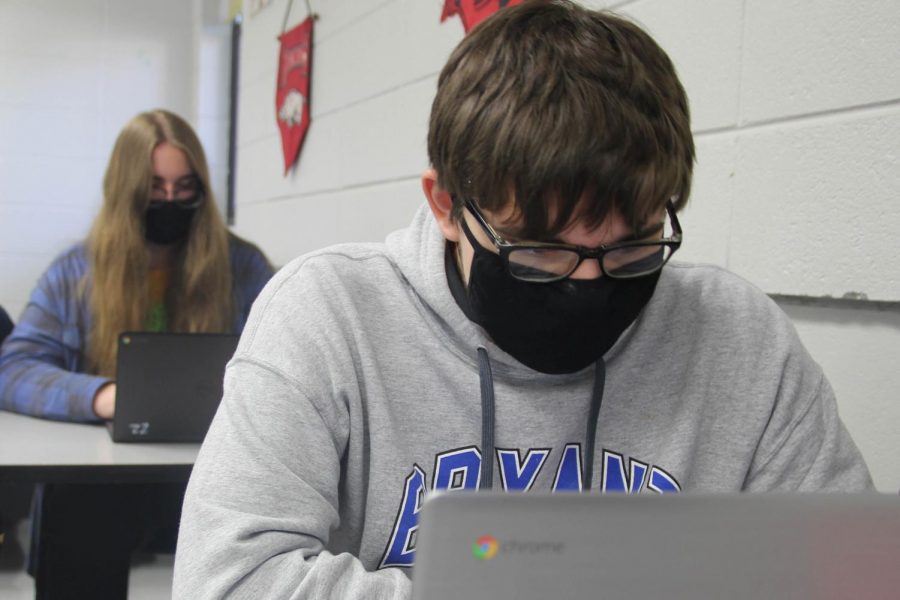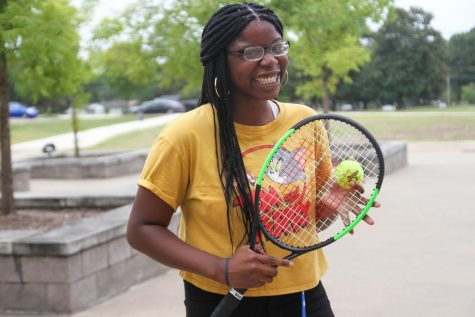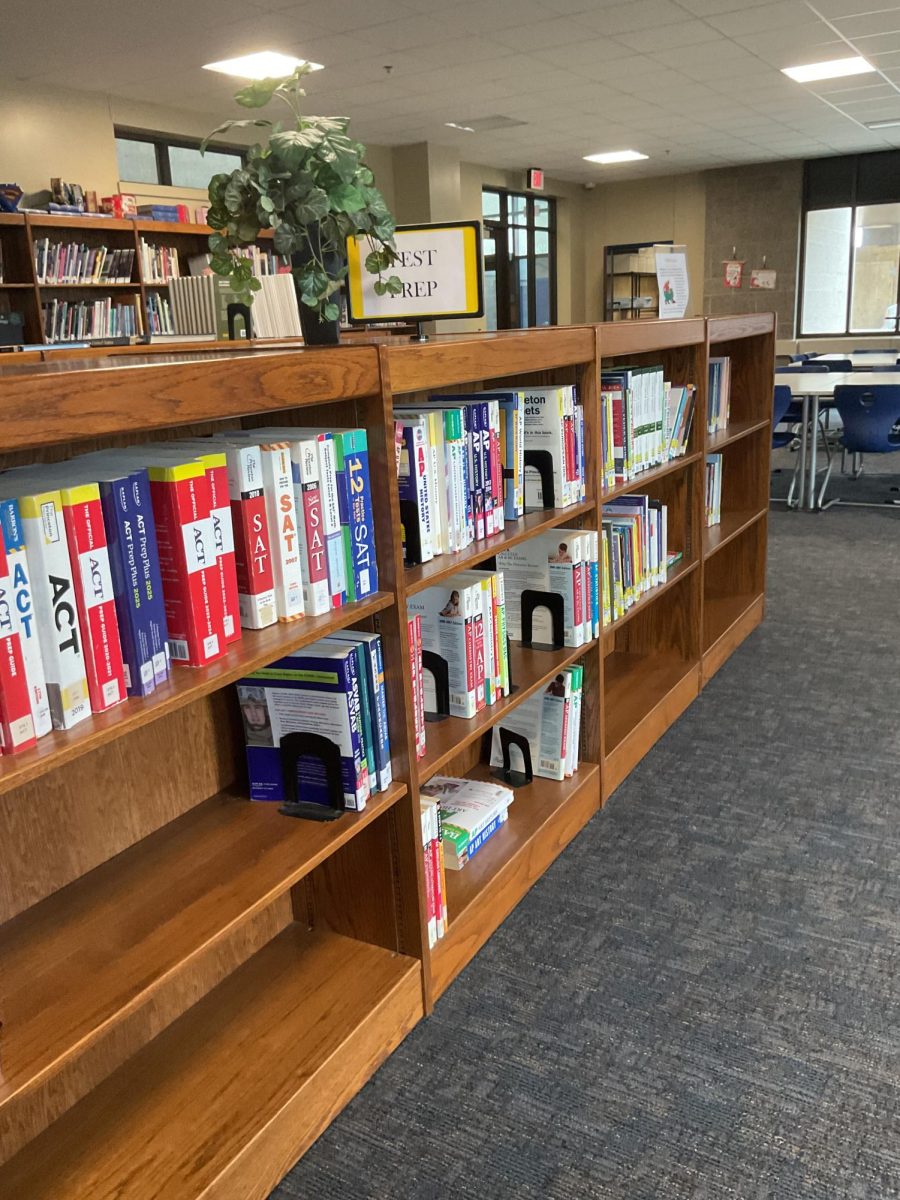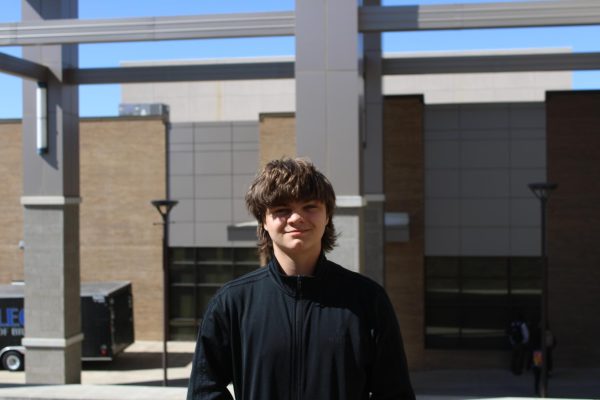Behind Schedules
COVID-19 affects process of creating student schedules
In English 12, senior Zachery Kutchfar works on assignments using a school-issued Chromebook.
November 12, 2020
Students fill the empty halls, bags on their backs as they stare at their schedules, searching for their next class. During a regular school year, students would receive and revise schedules within the first week of school. However, this year, schedules are still being changed even three months into the year.
Due to COVID-19, the school is offering students a virtual or blended learning program, which has changed the process behind creating and distributing schedules. In previous years, schedule changes would be finished within the first week, but because of the current situation, counselor Brenda Rodgers and the rest of the counseling staff are seeing daily changes.
“If a student has a medical need that arises in their family, we don’t want to put them in danger, so we change them from blended to virtual,” Rodgers said. “And let’s say we have a student who’s not doing well because they can’t function in a virtual setting. We don’t want them to fail, so we let them come back on campus.”
Whenever students make the switch from virtual learning to blended, or vice-versa, schedules must be changed to accommodate the environment. Students cannot remain in the same classes they were in before, since teachers have separate periods for blended and virtual learning. Senior Hunter High chose to switch from blended to virtual.
“[The schedule changing process] was very simple, but infuriating at times,” High said. “The counselor was very nice, she helped me every step of the way. By far, she definitely made the process easier.”
Although this process does not include a lot of work for students, for counselors, creating schedules can take anywhere from 20 to 40 minutes, depending on the complexity. With this process using a significant portion of their time, other aspects of their jobs are affected.
“Around this time, I would be meeting [with] seniors,” Rodgers said. “I’m still getting my senior visits done, we all are, but it’s less than it normally would have been at this point because we’re still dealing with [schedule changes from] virtual to blended to virtual,” Rodgers said.
Some teachers have been assigned to teach both virtual and onsite classes. If certain classes didn’t reach a certain minimum number of students enrolled, the class would not be offered as an option for virtual students. Certain electives are also only offered on campus, which led to students like High having to drop his newspaper class.
“[The counselor] didn’t initially tell me I had to drop electives,” High said. “I got one email like, ‘If you go virtual, you’ll have to drop electives,’ [and] that hurt a lot. My dad and I had an hour-long discussion about it. I’m not happy about it, but I am okay with it.”
For students that did not participate in several electives, such as sophomore Jalen Jones, this effect was insignificant.
“[I liked my changed schedule because] they got me the classes I needed and wanted, so I was satisfied,”’ Jones said.
Some onsite classes experienced a smaller number of students compared to others, so in order to decrease this gap, students were moved from certain classes and placed into alternate ones. English teacher Shawn Regan’s classes were affected by these changes.
“I literally told the counselors, ‘Do not touch my schedule,’ and they said it’s coming from higher up from them,” Regan said. “So then I sent emails out, trying to coerce administrators and people in the central office to not move around [student] schedules. And I get their point with students moving from face-to-face to virtual. There has to be a balance, and some classes had fewer than 10 students, and our policy is classes that don’t have x amount of students can’t make [a class], so they’ve combined classes.”
Changes from COVID-19 have affected everyone, from students to teachers to staff. Since there is no current solution to this issue, living within the reality of the situation is the only option, and Regan thinks some of the changes that have been implemented will continue in the future, regardless of the pandemic.
“Whatever rules and regulations have been set up, it needs to be–and this year especially–what’s best for the student,” Regan said. “And I think that mentality is going to carry over in education for the next few years, if not for the entire future. If a student and their circumstances and their surroundings would benefit from being virtual, we’re probably going to have to allow that from here on out.”





